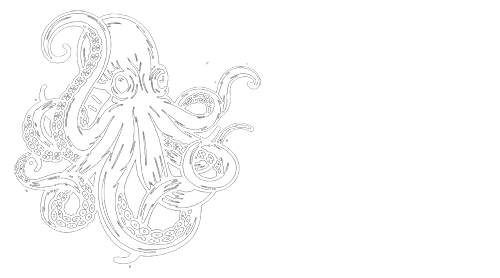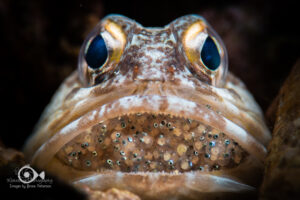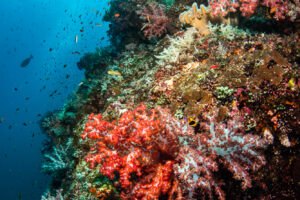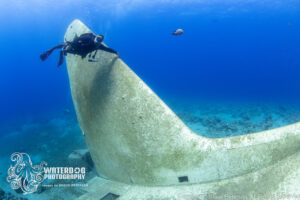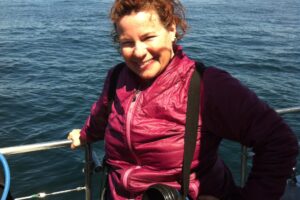I have had the pleasure of giving interviews to magazines or other underwater photography related outlets and the number one question I am asked is “Do you have any tips for other underwater photographers?” The answer is yes!
Check out these interviews for some quick tips!
There are some things that seem to have developed into second nature type thinking for me, and as I think about them, I realize that the things I have learned through study and experience are the backbone of my photography. For example, my father is a professional landscape photographer. When I asked him once about his photographs, he told me he already had the image he wanted to make in his head. He had already visualized what he wanted before he ever took the photo.

For me, this seemed complicated or unobtainable at first. I thought, as an underwater photographer, I am not afforded the luxury of planning my shots ahead of time. I just get to shoot whatever swims by. But now I know that I was completely wrong in that thinking.

The above image of a juvenile sea lion blowing bubbles took many hours and maybe hundreds of shots to get. Countless times I heard people congratulate me on my “lucky” shot. The truth is, I had been observing the behavior of juvenile sea lions for several years. I knew that they would become curious about divers and that they would exhibit certain types of behaviors. This sea lion looked like a good candidate when I jumped in the water because he was especially playful and curious about me. I took about 130 shots of him racing by me and posing for me. Twice he blew bubbles as he passed by and this was the resulting image. It wasn’t just luck, although a small percentage of the shot was chance. I had my camera settings properly dialed in, I floated in the water at the same depth as the sea lions were playing, I kept the sun slightly at my back so that the image would have proper color, and I anticipated the behavior of the sea lion before I took the shot. That was the real key.

Another image that wasn’t just a lucky shot is this Jawfish showing off his eggs. Over a period of about three or four years I observed jawfish on various dives. I learned that when they have eggs, they will have to turn or shuffle the eggs around in their mouths. At the beginning of a trip, I noticed this jawfish with new eggs in its mouth. They were yellow without any development of eyes yet. I observed it for thirty precious minutes or so and noted that he shuffled the eggs roughly every 12 minutes. I had learned that the eggs take a couple of weeks to develop before they are released during a full moon. So around a week later, I returned to the spot to see how the eggs had developed. The fish was in his hole, and he was very shy. I had to approach very slowly. He opened his mouth to aerate his eggs only twice during my entire 80 minute dive and this shot was taken during the second shuffle. It was an exercise in patience and planning but eventually it paid off.

The best advice I can give for getting a great shot is to plan, have the right tools available, and learn all you can about the behavior of the animal you intend to shoot. Many sea animals will stay in the same place, or come back to the same place and you can predict where they will be before you take the shot. I saw this snake eel and shrimp on a dive where I did not have the tools available to make the image above. I noted where it was and returned to the dive site several days later knowing that it would probably still be there. I had a snoot torch for backlighting and a Retra light shaping device to light the eye. I intended to show the silhouette of the eel with light outlining its form and shining through the shrimp. I also wanted its eye lit up so that you could tell what it was. This shot also took me an entire dive to get while patiently waiting for the shrimp to be in the right place, figuring out how to get the eye lit properly and the exposure right in the background. Again, careful planning and execution.

All this being said, there are still great shots to be had that are a happy combination of circumstances. Sometimes a fantastic animal does just happen by or an unexpected behavior reveals itself right in front of your camera lens. But the majority of great underwater photographs are purposeful, well planned and timed, and deliberate. The key is to educate yourself about the shot you want to achieve, know how your camera and other accessories work and be patient. Some photographs take years of planning just to preserve a few fleeting moments.
Join me for a workshop! Travel to a great destination where you will have exclusive coaching on your underwater photography. Meet new people, network, try new techniques, and learn with the pros! Click on Travel and Workshops for more information!
Subscribe now!
As always, if you enjoy my images please visit my website, waterdogphotography.com, or give me a like on Facebook at Waterdog Photography Brook Peterson. Don’t forget to follow me here at waterdogphotographyblog and please feel free to share on Facebook or other social media.
My photographs are taken with a Nikon D810 in Sea and Sea Housing using two YS-D2 Strobes.
All images and content are copyrighted by Brook Peterson and may only be used with written permission. Please do not copy or print them. To discuss terms for using these images, please contact me.
copyright Brook Peterson 2018

